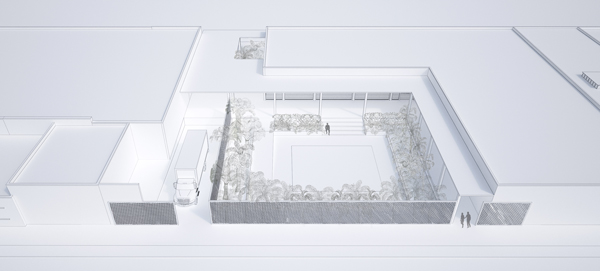Lyle Stern had his “aha” moment on a quiet Saturday afternoon last year when he visited Miami’s Allapattah neighborhood with his 11-year-old daughter. Stern, the president of Koniver Stern Group — a leading retail leasing and consulting group based in Miami Beach — took his daughter to a bodega for a $2 fresh fruit shake and to show her the neighborhood around the old Miami Allapattah produce market.
As his daughter called the neighborhood “cool,” Stern looked at the old warehouses and realized he could have been standing in New York’s Meatpacking District or the Fulton Market in Chicago’s West Loop years before they became must-go destinations.
“In my business, we talk of experiential real estate,” Stern said, “places where people can have true experiences, and this is not one where it has to be created — it’s basically here, hiding in plain sight.”
Stern now owns three of those warehouses in Allapattah, joining scores of other investors and entrepreneurs making the move to the neighborhood just west of Wynwood, which stretches east-west from Northwest Seventh Avenue to Northwest 27th Avenue and, from north to south, from 20th Street to 36th Street.
Allapattah, which means alligator in the Seminole language, is one of Miami’s oldest neighborhoods. Just to its south is the Miami River, where despite extensive residential development you can still see small freighters docking to load cargo destined for Latin America and the Caribbean.
The city of Miami recently rezoned much of Allapattah T6-8, which allows for mixed-use buildings to be built up to eight stories with 150 units per acre. And the sprawling neighborhood is teeming with activity.

Lyle Stern
Last year the Rubell Family Collection art museum, which was instrumental in the development of Wynwood, announced that after 23 years there it will move to a new 100,000-square-foot building on a 2.5-acre campus at 1100 NW 23rd Street on a site purchased by Jason Rubell for $4 million in April 2015. A statement from his mother, Mera Rubell, said the family “enjoyed the process of discovery, whether it’s new artists or emerging neighborhoods,” and that it was “time for us to reimagine our Foundation in a very exciting emerging neighborhood.” She added that the goal was to open the new museum in time for Art Basel in December 2018.
Nearby, Miami Beach developer Robert Wennett paid $16 million for a combined 9.72 acres of land that made up the old Miami Allapattah produce market, which includes two enormous warehouses. Wennett, who paid $103 per square foot for the warehouse space, is best known for building a starkly modern parking garage on Lincoln Road in Miami Beach. He has not announced plans for this site.
Stern said that without the commitment from Wennett and the Rubell family, he and his partners probably would not have invested in Allapattah, but the more he learns about the neighborhood, the more he likes it. Small architecture and design firms, for example, can buy a 10,000-square-foot building with 20 parking spaces right next to downtown and near the airport.
Some of Miami’s biggest employers — Jackson Memorial Hospital, the Ryder Trauma Center, the Civic Center and the entire court complex — are adjacent to Allapattah, and Stern said he believes that in a few years many of their workers will be eating and shopping in the produce market.
‘‘Allapattah has the benefit of being a truly authentic neighborhood,” Stern said. “This is a real marketplace just like the Meatpacking District in New York or the West Loop in Chicago or the ferry terminal in San Francisco. These were all places that were born out of food distribution and are still informed by food distribution with amazing, big-boned buildings.” Those big buildings are attracting other creative types, such as interior designer Austin Harrelson and his wife, Sarah, the publisher of Whitehaus Media Group. They recently bought an 8,500-square-foot warehouse on 21st Street where they plan to base both of their companies.
“The thing about Allapattah which is so different from other areas is the buildings are true industrial buildings that have a little air or space around them,” said Austin Harrelson. “I’ve got a lot of creative friends who are looking there.’’
Carlos Fausto Miranda, a commercial real estate broker who said his firm did $48 million worth of business last year in Allapattah, said prices where the Rubell and Wennett properties are located can rent for as much as $30 per square foot, and sale prices have jumped from $100 per square foot to as much as $300.
But Miranda said Allapattah is a big neighborhood. Go a few blocks west of the Wennett and Rubell properties, and buildings sell at much cheaper rates.
Unlike nearby Wynwood, there’s a lot of land in the area. “Allapattah is a much bigger neighborhood than Wynwood, so being bigger means it has more submarkets, each with their own set of dynamics,” said Miranda, who added that with its mix of residential and commercial areas, Allapattah is in a much different place than Wynwood was when developers began buying property there 20 years ago. “It has a strong preexisting retail and industrial base, there are a lot of businesses that have thrived in the neighborhood, which was not the case in Wynwood, and so Allapattah begins as a complete neighborhood as opposed to a new vision,” he said.

Diagram of the Rubell Family Collection museum
But some experts are voicing caution. Former Miami Beach Mayor Neisen Kasdin, an attorney at Akerman who closely follows developments in Allapattah, said, “I think what’s happened in Allapattah is that prices have run up a lot and that it is no longer as inviting as it was to the early investors because it’s a lot more expensive.’’
In answer to that, Miranda said what will be built in the short term in Allapattah will be residential as well as self-storage because of lower underwriting costs. He said the area along 36th Street, where pricing is $40 to $60 per square foot for land, and where there are large lots left over from when it was the go-to neighborhood to buy a used car in Miami, could be an ideal location for developers to build affordable housing units.
Just as home-furnishing businesses began to cluster in Miami’s Design District, Miranda expects a similar trend will develop in Allapattah. Along 17th Street, he expects to see more high-end construction and design businesses develop near McKenzie Construction, whose 25,000-square-foot state-of-the-art facility opened in 2015. The company, which is made up of two divisions, McKenzie Construction and McKenzie Craft, is known for its high-end renovation work.
McKenzie’s chief operating officer, Benji Power, said 17th Street is an ideal location, near all of Miami’s major highways, and the neighborhood is well suited for the sorts of craft industries that are starting to take root in the city.
“I think hip manufacturing makes sense in Allapattah, like the maker movement — furniture, food products, boutique gourmet brands — so that’s more the industrial use than the day-to-day retail that Wynwood attracts,” he said.
For now, much of the construction work being done in Allapattah consists of cleaning up old buildings and trying to get them occupied for retail use. With few exceptions, it’s not the high-end new construction that can be found in Wynwood.
“Wynwood is still very hot and churning,” said Power, who, like Kasdin, cautioned against owners charging too much for properties.
“I would say we have turned on the stove top, the burner is on low and we are cooking something, and the residents hopefully will get to be a part of that. But nothing is boiling yet, and nothing is baked yet, and it’s not time to start serving this dish,” he said.
There’s another consideration for investors in Allapattah — it sits on higher ground and is less likely to be affected by the sea-level rise that is beginning to concern developers along the water. Miranda said one investor who has negotiated several deals in Allapattah and is negotiating for several more has jokingly called his properties Sea Level Rise LLCs.
“If that’s not an innate endorsement of the fear of rising sea levels, I don’t know what is,” Miranda said.
